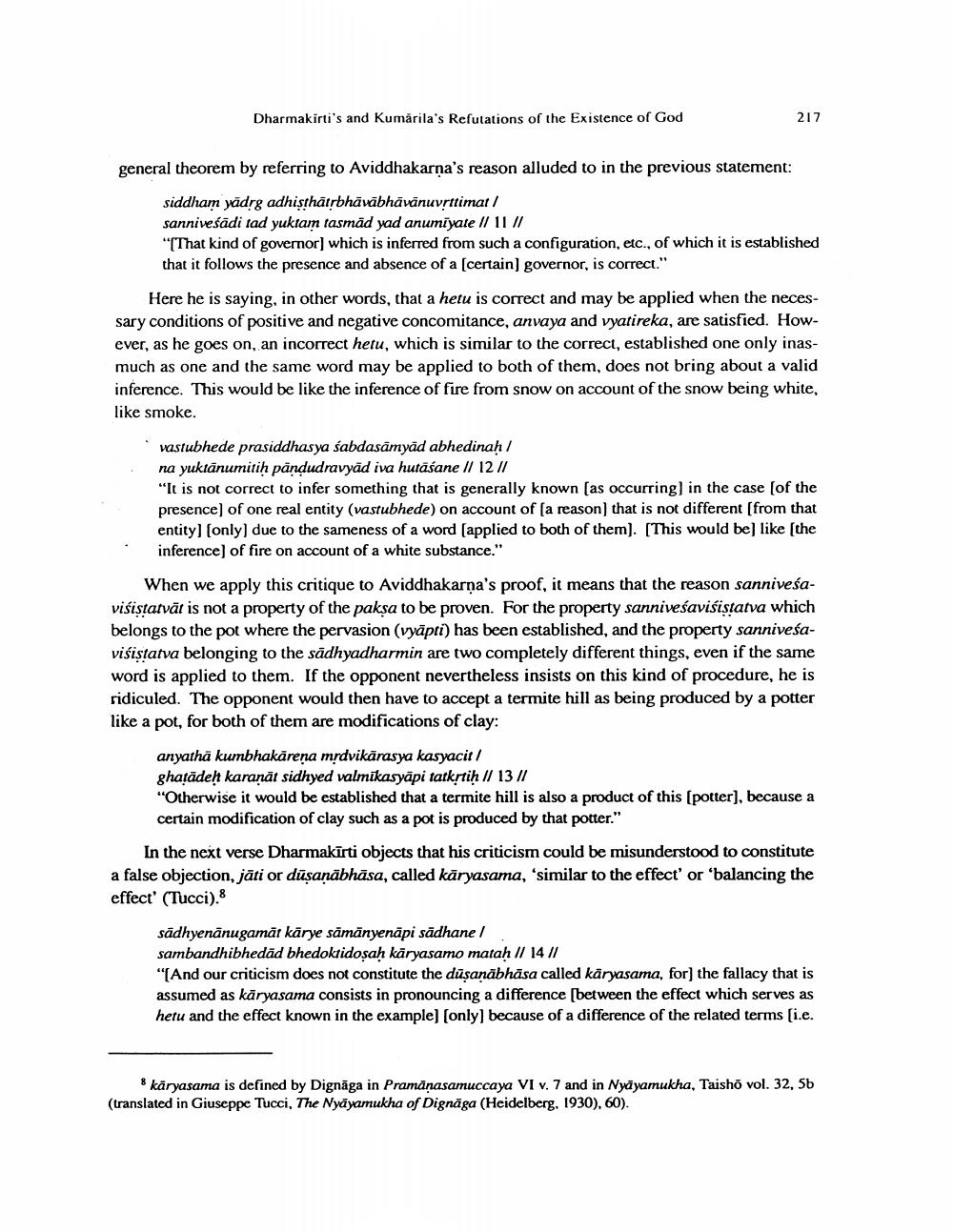________________
Dharmakirti's and Kumărila's Refutations of the Existence of God
217
general theorem by referring to Aviddhakarna's reason alluded to in the previous statement:
siddham vädrg adhisthātrbhāvābhävänuvrttimat/ sanniveśādi tad yuktam tasmad yad anumiyate II 11 // "[That kind of governor) which is inferred from such a configuration, etc., of which it is established that it follows the presence and absence of a (certainl governor, is correct."
Here he is saying, in other words, that a hetu is correct and may be applied when the necessary conditions of positive and negative concomitance, anvaya and vyatireka, are satisfied. However, as he goes on, an incorrect hetu, which is similar to the correct, established one only inasmuch as one and the same word may be applied to both of them, does not bring about a valid inference. This would be like the inference of fire from snow on account of the snow being white, like smoke.
vastubhede prasiddhasya sabdasāmyad abhedinah / na yuktānumitih pandudravyād iva hutāśane // 12 // "It is not correct to infer something that is generally known (as occurring) in the case (of the presence of one real entity (vastubhede) on account of a reason) that is not different from that entity) (only) due to the sameness of a word (applied to both of them). [This would be like (the inference) of fire on account of a white substance."
When we apply this critique to Aviddhakarna's proof, it means that the reason sanniveśavisistatvāt is not a property of the paksa to be proven. For the property sanniveśavisistatva which belongs to the pot where the pervasion (vyāpti) has been established, and the property sanniveśavisistatva belonging to the sādhyadharmin are two completely different things, even if the same word is applied to them. If the opponent nevertheless insists on this kind of procedure, he is ridiculed. The opponent would then have to accept a termite hill as being produced by a potter like a pot, for both of them are modifications of clay:
anyatha kumbhakarena mrdvikārasya kasyacit / ghatādeh karanāt sidhyed valmikasyāpi tatkrtiḥ // 13 // "Otherwise it would be established that a termite hill is also a product of this (potter), because a
certain modification of clay such as a pot is produced by that potter."
In the next verse Dharmakīrti objects that his criticism could be misunderstood to constitute a false objection, jāti or dūsanābhāsa, called kāryasama, 'similar to the effect' or 'balancing the effect' (Tucci).
sādhyenānugamät kārye sämänyenāpi sādhanel sambandhibhedād bhedoktidosah käryasamo matah // 14 // "[And our criticism does not constitute the dusanābhāsa called käryasama, for the fallacy that is assumed as kāryasama consists in pronouncing a difference between the effect which serves as hetu and the effect known in the example) (only) because of a difference of the related terms (i.e.
8 karyasama is defined by Dignāga in Pramanasamuccaya VI v. 7 and in Nyāyamukha, Taisho vol. 32, 5b (translated in Giuseppe Tucci, The Nyāyamukha of Dignāga (Heidelberg, 1930), 60).




